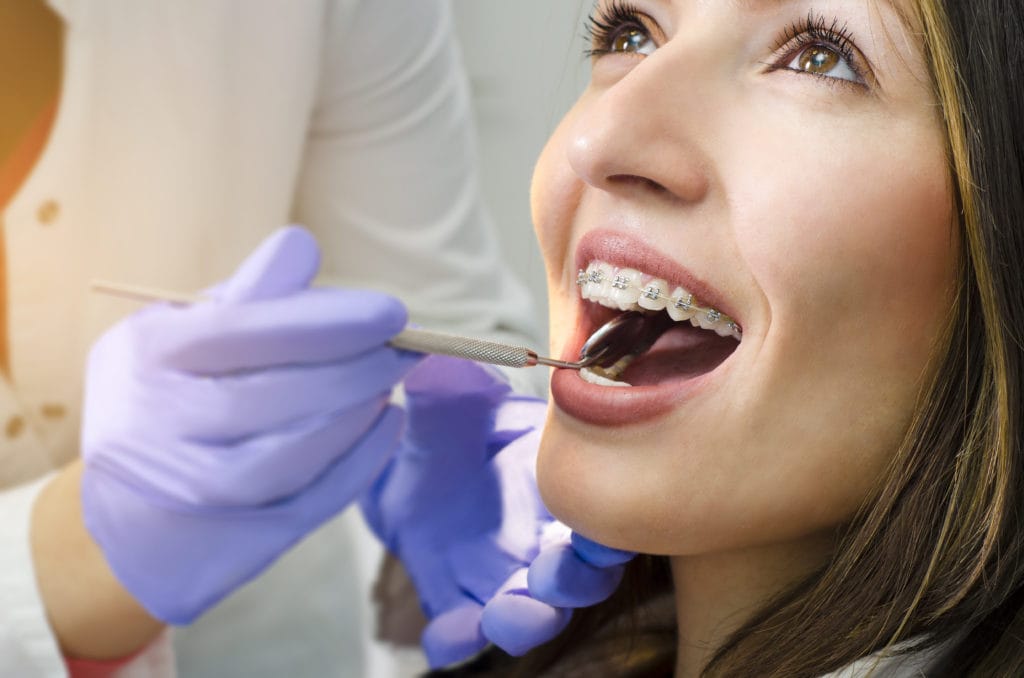Having trouble deciding on whether you should let your personal dentist provide your orthodontic treatments? Here at Brodsky Orthodonticswe have put together a few facts to help you decide on what is best for your personal treatment. Most people do not know that while all orthodontists are dentists, only a small number of dentists actually become orthodontists. Some dentists might do a variety of procedures in their office, and occasionally that will include some orthodontics. Orthodontists are specialists, and because they are specialists, they will limit their practice to braces and Invisalign. To put it simply, an orthodontist deals with orthodontics, which is the branch of dentistry that deals with the prevention and correction of irregular teeth and jaw alignment with braces or Invisalign.
The Real Difference Between an Orthodontist and a Dentist
After graduation, most dental students go directly into general dental practice, where they provide the variety of dental services that they have learned in dental school. However, a small but select few number of dental students will decide to hone in on a specialty like orthodontics. An additional 2-3 years of residency training is required to become competent in the specialized knowledge that is needed to understand the complex diagnosis and treatment of orthodontic patients. A dentist only becomes proficient in braces and Invisalign after completing a residency in orthodontics. They then become an orthodontist whose level of expertise in braces and Invisalign sets the standard of care for the profession. Only the best are selected for these highly competitive, specialty training programs. Recently, out of over 250 dentists who applied to UCLA for residency, only 4 were approved to enter residency training. One big way to tell an orthodontist from a general dentist is in their signage. A general dentist who offers orthodontic services to their patients will always use the signage which says “Orthodontics.” It will never say “Orthodontist.” They do not have the additional training needed to be a specialist, so to present themselves as such would be deceptive to the consumer. Most states have consumer protections in place so that only an orthodontic specialist may refer to themselves as such. Once it has been all said and done, an orthodontist will have spent around 10 years in school, which obviously means that orthodontists have a great passion for, and commitment to, what they do!

Competitive Prices
A lot of people are under the mistaken assumption that going to an orthodontist for their braces will cost them much more than going to a general dentist for the same service. The truth is that there is not a huge price point difference between seeing an orthodontist as opposed to a dentist. Treatments are actually often cheaper at the orthodontist’s office because they are able to work more efficiently and have the equipment or materials on hand at all times.
Seeing the Dentist During Orthodontic Treatment
While an orthodontist is technically a dentist, the commitment to their specialty often means they only treat patients within that specialty. Most orthodontists request that their patients see a general dentist for help with cavities, tooth cleaning, or other general dentistry needs. If you are unsure about which dentist to choose, Brodsky Orthodontics will be glad to refer you to a dentist that we have confidence in for general dentistry during your orthodontic treatment. A general dentist should also help with gum issues, oral hygiene, and general health. Dentists often refer their patients to orthodontists for specialized care because proper teeth and jaw alignment is vital to their health. There is a good chance you were first referred to an orthodontist while sitting in your dentist’s chair!
The Earlier, The Better
Time is precious and most of us do not have enough of it. You or your child may not have been referred to an orthodontic specialist at your last cleaning appointment or check up, but that does not change the fact that you need to see one. Many people, even some dentists, are surprised to find out that the American Association of Orthodontists recommends children see an orthodontist no later than age 7. A potentially minor problem becomes much more serious when orthodontic treatment starts after all of the permanent teeth are in and fully erupted. It is a much cheaper and less invasive option to solve orthodontic problems early in a child’s life.

Dentists Who Offer Teeth Straightening
There are dentists out there who have taken classes on orthodontics. These are often weekend classes and are sponsored by companies like as Invisalign, Fastbraces, and Six Month Smiles. These classes are primarily focused on teaching dentists how to place orders for those specific products. In the case of certain simple problems, these options may be the right choice for some patients. However, most patients prefer an expert to evaluate their case before investing the time and money associated with braces or Invisalign. You may think that it is easier to have your orthodontic work completed by the family dentist, but the truth is you will only be stopping by the orthodontist’s office every eight to ten weeks— so once every two months or more. If convenience is truly a concern, schedule a free consultation with Brodsky Orthodonticsso we can assist you!
Ready to start your orthodontic treatment? Brodsky Orthodonticsis currently accepting new patients! We will walk you through the process and answer any questions you may have. If you are in the Greater Long Beach area and would like to speak with our staffto learn more about our process, give us a call!
